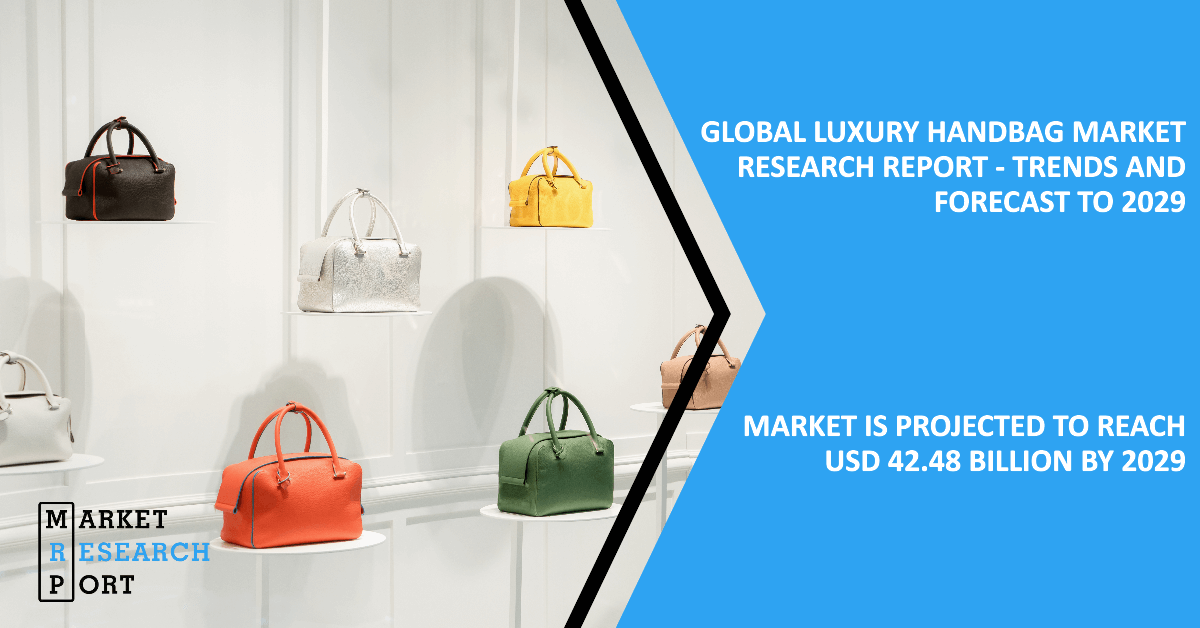
Market Research Port forecasts that the luxury handbag market will experience a compound annual growth rate (CAGR) of 8.20% from 2022 to 2029. With a market value of USD 22.61 billion in 2021, it is projected to reach USD 42.48 billion by 2029. The “Handbag” category remains dominant due to the increasing number of fashion-forward consumers worldwide.
The luxury handbag sector is witnessing remarkable growth, driven significantly by millennials and Generation Z, who allocate a substantial portion of their income to high-end fashion items. These luxury handbags, crafted from premium leather and designed by renowned stylists, symbolize both investment value and prestige. Major brands in this sector include Guccio Gucci S.p.A., Giorgio Armani S.p.A., Valentino S.p.A., Burberry Group PLC, Chanel S.A., Dolce & Gabbana S.R.L., Prada S.p.A., Atelier, Louis Vuitton, and Tory Burch LLC.
Luxury handbags are characterized by their use of high-quality materials and expert craftsmanship. Available through both online and offline channels, these products are seen as valuable assets and symbols of social status.
– Type: Handbag, Backpack, Wallet, Others
– Handbags are further categorized into shoulder bags, satchel bags, sling bags, tote bags, and hobo bags. The “Others” category includes laptop and messenger bags.
– Material: Cotton, Leather, Nylon, Synthetic
– End-User: Men, Women, Unisex
– Distribution Channel: Duty-Free Stores, Online Stores, Discount Stores, Hypermarkets, Specialty Stores
Regional Analysis
– Europe: The market is led by Europe, with prominent luxury brands headquartered in Germany, France, and the UK.
– Asia-Pacific: This region is expected to grow rapidly due to its large population and increasing acceptance of luxury fashion.
Drivers:
1. Fashion Awareness: The rise of social media and fashion influencers drives demand for luxury handbags.
2. Brand Awareness: Increased visibility and awareness of various brands fuel global demand.
3. Rising Disposable Income: Higher incomes and the expansion of online shopping contribute to market growth.
Opportunities:
1. Innovation and R&D: Investments in sustainable practices and technological advancements in manufacturing offer growth prospects.
2. Technological Progress: Advances in production technology and online retail services enhance market potential.
Challenges:
1. High Costs: The luxury sector faces challenges due to high research and development expenses, product costs, and pandemic-related supply chain issues.
2. Counterfeit Goods: The prevalence of counterfeit products and high import duties may impede market growth.
The COVID-19 pandemic adversely affected the luxury handbag market by causing manufacturing delays, supply chain disruptions, and decreased production. However, the surge in e-commerce provided a boost to online sales, indicating a positive outlook for the market as digital retail continues to expand.
In February 2022, Louis Vuitton announced plans to boost its production capacity for high-end handbags to compete with Hermès USA, which is also expanding its manufacturing facilities to meet demand.
Key players in the luxury handbag market include:
– Macy’s Inc.
– MARC JACOBS INTERNATIONAL, LLC
– Michael Kors
– LACOSTE
– PVH Corp.
– MCM Worldwide
– Michael Kors GmbH
– Ralph Lauren Corporation
– Cartier International SNC
– Guccio Gucci S.p.A.
– Giorgio Armani S.p.A.
– Valentino S.p.A.
– Burberry Group PLC
– Chanel S.A.
– Dolce & Gabbana S.R.L.
– Prada S.p.A.
– Atelier
– Louis Vuitton
– Tory Burch LLC
This report provides a comprehensive overview of market trends, segmentation, and competitive dynamics, helping stakeholders make informed decisions. For more detailed analysis and insights, contact Market Research Port.